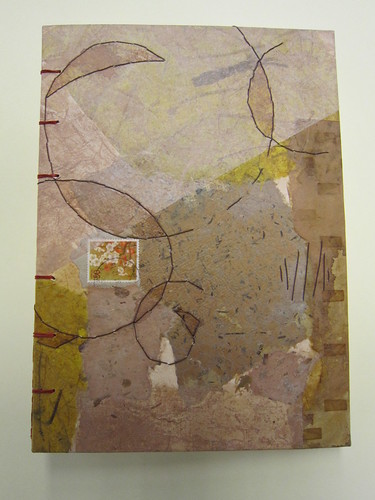This article is more than 5 years old.
This weekend, my wife, Kathie and I took a workshop at Asheville Bookworks. This is a center for bookmaking, paper making and letterpress printing located in West Asheville. Bookworks is a large open factory style building that has been converted into a workshop. There is a large paper-making room in the rear. The main work area is lined with letterpress printers, type cabinets and a number of bookbinding cutters and tools. Bookworks also has a small gallery and sales area. This workshop was called: Kakishibu (kah-kee-she-bu) and Coptic and was taught by artist , Heather Swarttouw. I’m writing about this workshop because I really wanted to learn the coptic binding style. This workshop was a way of expanding my binding knowledge and therefore, my understanding and ability to work with a variety of bindings and materials. The coptic style I learned used 2 needles-one at each end of a long piece of waxed linen thread. Before you actually start sewing, you punch holes at each sewing station of each signature of the book. The cover is also punched with holes in the same locations. Sewing progresses from the cover through each signature, to the opposite cover. I have to say: this was the most difficult sewing I’ve ever attempted.
We also learned to use a Japanese dye made from aged, unripe persimmons called Kakishibu. This liquid has a sepia-like color and is also light sensitive. It gains a richer color as it ages and darkens. We tried a few experiments using sunlight and placed objects on paper we had painted with the kakishibu. A piece of paper covered with pennies might create a polka dot pattern.
The workshop was fun and it was a great chance to learn a new stitch, meet new people and experience Asheville.


2 Comments on ‘Coptic Binding Workshop @ Asheville Bookworks’
Very cool!
Did you learn anything about the history of Coptic manuscripts? — it is one of the longest manuscript traditions in the world, continuing strong through the 19th century and still pursued today on a small scale. Sounds like a great workshop.